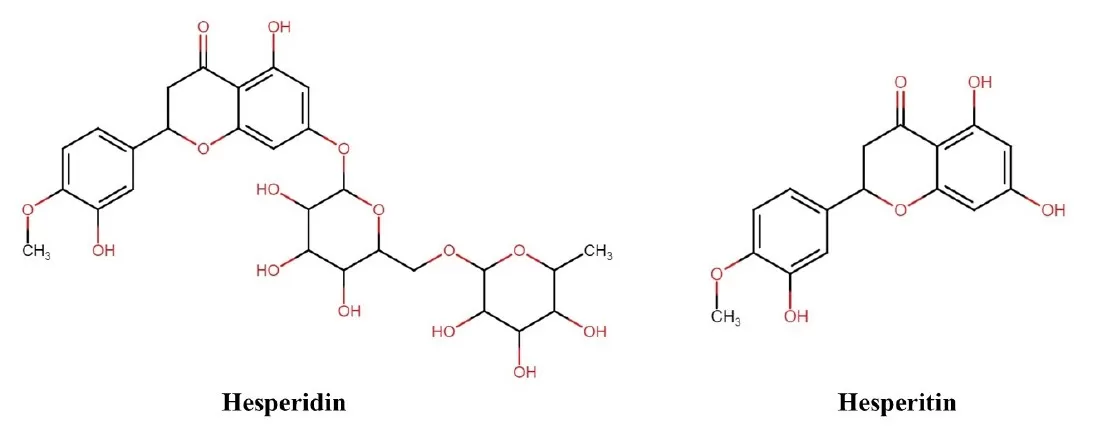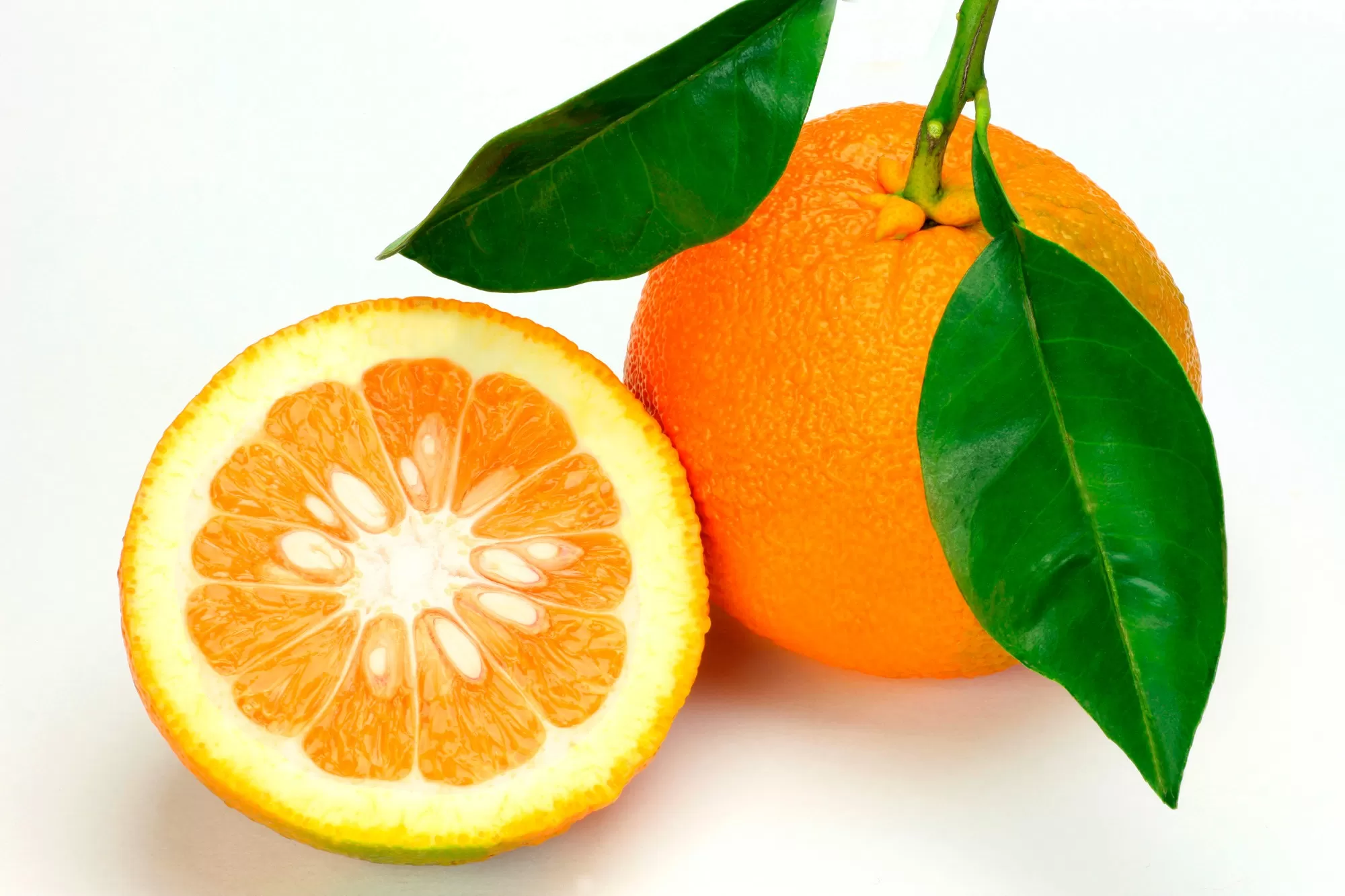- 0086-571-85302990
- sales@greenskybio.com
What is Diosmin Hesperidin?
2025-03-23

In the realm of health and wellness, natural compounds derived from plants have garnered significant attention for their therapeutic properties. Among these, Diosmin and Hesperidin, both flavonoids primarily found in citrus fruits, stand out for their synergistic benefits in improving vascular health and treating conditions associated with poor circulation. These naturally occurring compounds are often combined in supplements and medications due to their complementary actions on blood vessels and capillaries. In this article, we will explore what Diosmin and Hesperidin are, their mechanisms of action, and their applications, particularly in the management of venous disorders.
Understanding Diosmin and Hesperidin
Diosmin and hesperidin are types of flavonoids, which are plant compounds known for their antioxidant and anti-inflammatory properties. They are predominantly found in citrus fruits, such as oranges and lemons, and are used in the treatment of various vascular conditions, thanks to their ability to support and enhance vein function.
Diosmin
Diosmin is a flavonoid categorized as a phlebotropic agent, meaning it specifically targets blood vessels, particularly veins. It is a derivative of hesperidin and is often found in higher concentrations in medicinal formulations. Diosmin is recognized for its ability to strengthen blood vessel walls, reduce inflammation, and improve circulation, making it valuable in managing symptoms associated with venous insufficiency.
Hesperidin
Hesperidin is a bioflavonoid with strong antioxidant properties. It is present in citrus fruits and is widely used for its beneficial effects on capillary health. Hesperidin helps reduce capillary permeability and fragility, enhancing microcirculatory function and reducing edema. Its ability to complement diosmin's actions makes it an integral component of vascular health treatments.

The Synergy Between Diosmin and Hesperidin
The combination of diosmin and hesperidin in supplements or medications is designed to maximize their vascular benefits through a synergistic approach. When used together, they offer enhanced efficacy due to their complementary mechanisms:
Improved Vascular Tone
Diosmin enhances vascular tone by reducing venous distensibility and increasing venous return. This helps alleviate venous congestion and promotes efficient blood flow. Hesperidin complements this action by enhancing capillary resistance and reducing permeability, leading to improved overall circulation.
Anti-Inflammatory Effects
Both diosmin and hesperidin possess anti-inflammatory properties, which are crucial for managing conditions associated with chronic inflammation in blood vessels. They inhibit the production of inflammatory markers and cytokines, reducing inflammation and providing symptomatic relief.
Antioxidant Protection
As antioxidants, diosmin and hesperidin help neutralize oxidative stress, protecting blood vessels from free radical-induced damage. Their ability to preserve endothelial function supports healthy circulation and vascular integrity.
Reduction of Edema
By improving lymphatic drainage and reducing capillary permeability, the combination of diosmin and hesperidin effectively reduces edema (swelling) in tissues, particularly in the legs, a common symptom of venous insufficiency.

Applications in Vascular Health
The primary application of diosmin and hesperidin is in managing and treating conditions related to poor circulation and venous insufficiency. Some key uses include:
Chronic Venous Insufficiency (CVI)
Chronic venous insufficiency occurs when veins struggle to return blood from the legs to the heart, leading to symptoms like pain, swelling, heaviness, and varicose veins. Diosmin hesperidin products are commonly used to improve vein health, reduce symptoms, and enhance quality of life for those with CVI.
Varicose Veins
Varicose veins are swollen, twisted veins that occur when venous valves malfunction. Diosmin hesperidin supplements help reduce vein distension and improve circulation, minimizing the appearance and discomfort of varicose veins.
Hemorrhoids
Hemorrhoids are swollen veins in the rectal area, often caused by increased pressure and inflammation. Diosmin hesperidin preparations are effective in reducing inflammation, easing pain, and promoting healing.
Lymphedema and Edema
Diosmin hesperidin can be used to manage fluid retention and swelling (edema), particularly in the legs, by improving lymphatic flow and capillary function.
Capillary Fragility
Individuals with capillary fragility experience easy bruising and bleeding due to weakened capillaries. Hesperidin contributes to strengthening capillary walls alongside diosmin, reducing fragility and enhancing microcirculatory health.

Considerations and Usage
While diosmin hesperidin products are generally well-tolerated, certain factors should be considered:
Dosage and Administration: Follow recommended dosages provided by healthcare providers or product labels. Dosage may vary based on specific conditions and individual needs.
Consultation: Individuals with underlying health conditions, allergies, or those taking medications should consult with a healthcare provider before starting diosmin hesperidin supplements to avoid potential interactions.
Pregnancy and Breastfeeding: Limited research on the safety of diosmin hesperidin during pregnancy and breastfeeding advises consulting with healthcare professionals for personalized guidance.
Availability: Diosmin hesperidin supplements are available in various forms, including tablets, capsules, and topical creams, catering to diverse preferences and needs.

Conclusion
Diosmin and hesperidin stand out as effective natural compounds for promoting vascular health and managing conditions associated with poor circulation. Their synergistic effects offer profound benefits, including improved circulation, reduced inflammation, enhanced capillary strength, and symptomatic relief for conditions such as chronic venous insufficiency, varicose veins, and hemorrhoids.
By understanding their mechanisms and applications, individuals can make informed decisions about incorporating diosmin hesperidin into their health regimen, with the guidance of healthcare providers, to optimize vein health and overall circulatory wellbeing. As research continues to unravel their full potential, diosmin and hesperidin remain valuable assets in advancing natural and effective solutions for vascular wellness.
- ▶ Hesperidin
- ▶ citrus bioflavonoids
- ▶ plant extract
- ▶ lycopene
- ▶ Diosmin
- ▶ Grape seed extract
- ▶ Sea buckthorn Juice Powder
- ▶ Beetroot powder
- ▶ Hops Extract
- ▶ Artichoke Extract
- ▶ Reishi mushroom extract
- ▶ Astaxanthin
- ▶ Green Tea Extract
- ▶ Curcumin Extract
- ▶ Horse Chestnut Extract
- ▶ Other Problems
- ▶ Boswellia Serrata Extract
- ▶ Resveratrol Extract
- ▶ Marigold Extract
- ▶ Grape Leaf Extract
- ▶ blog3
- ▶ blog4
- ▶ blog5
-
what is hesperidin supplement
2025-03-23
-
what is glucosyl hesperidin
2025-03-23
-
Hesperidin: Uses and Benefits
2025-03-23
-
what does hesperidin do
2025-03-23
-
what is hesperidin complex
2025-03-23
-
What Is Hesperidin Good For?
2025-03-23
-
Resveratrol extract
2025-03-23
-
Peppermint Extract Powder
2025-03-23
-
Green coffee bean Extract
2025-03-23
-
Acai Berry Extract
2025-03-23
-
Golden Seal Extract
2025-03-23
-
Mangosteen extract powder
2025-03-23
-
Centella Asiatica Extract
2025-03-23
-
Nettle leaf extract
2025-03-23
-
Senna Leaf Extract
2025-03-23
-
Red Date Extract
2025-03-23






























